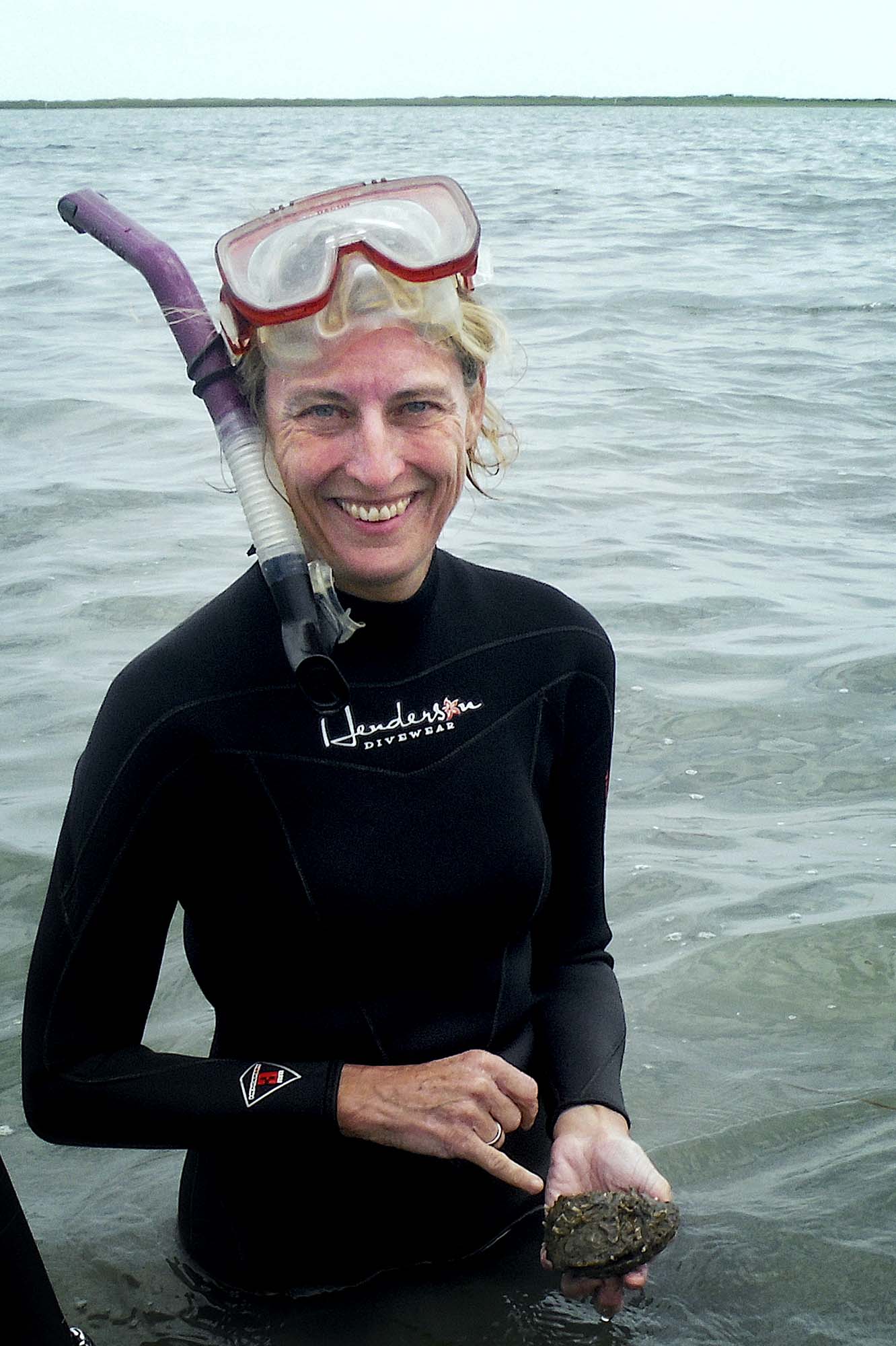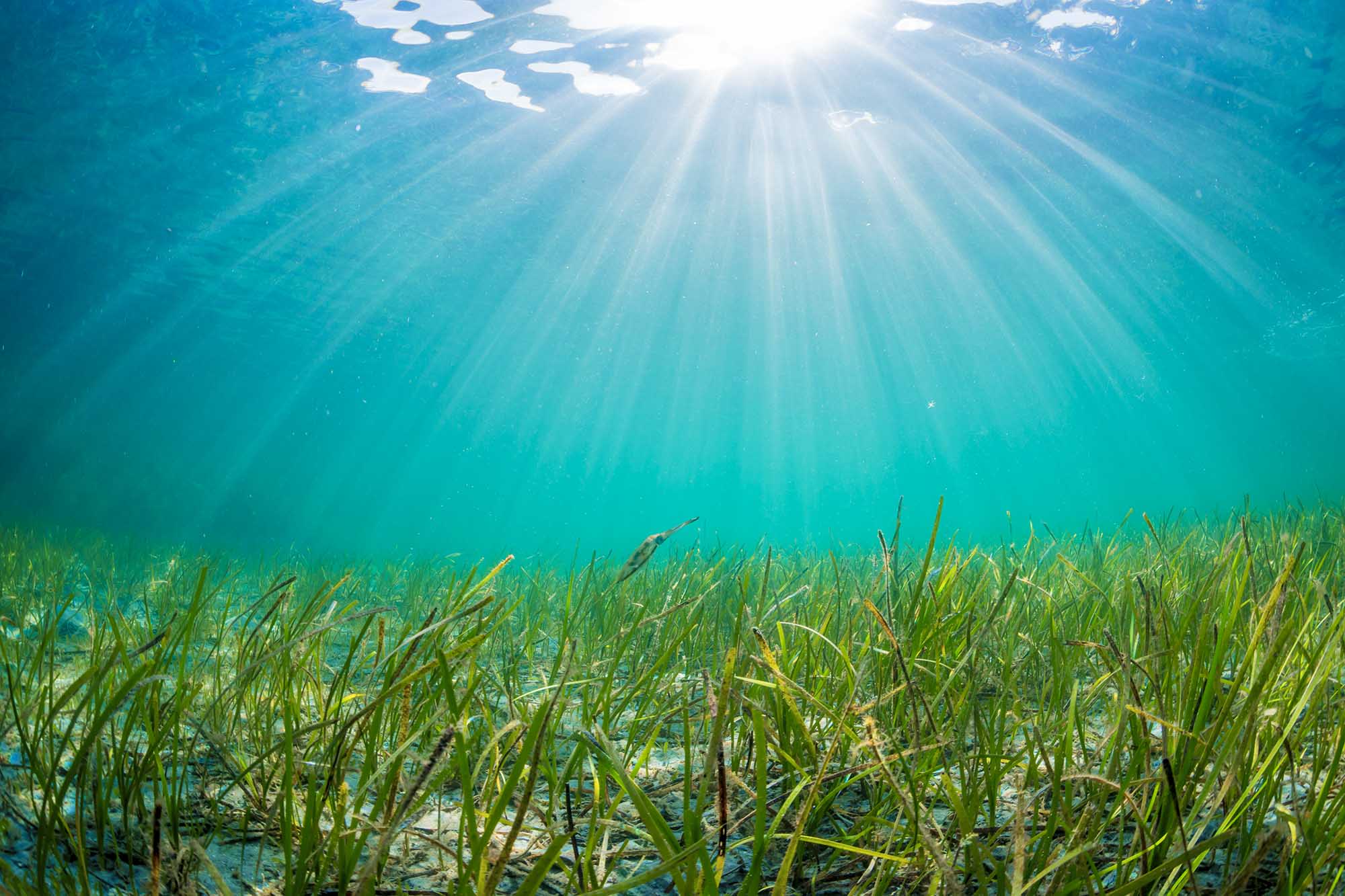In the late 1920s, a pathogen began killing seagrasses in Virginia’s seaside bays. A 1933 hurricane finished them off. For more than a half-century, the bay bottoms were muddy and barren, essentially removed of the fish, shellfish, mollusks and other creatures that inhabit healthy seagrass meadows. The scallop industry collapsed.
Today, the seagrasses are once again flourishing – facilitating the conditions that make for clean water and healthy fisheries – thanks to a seagrass restoration project conducted by environmental scientists at the University of Virginia, the Virginia Institute of Marine Science and The Nature Conservancy. The reintroduction of seagrass into Virginia’s coastal bays is proving to be one of the great success stories in marine restoration.
During the past 21 years, scientists and volunteers have spread more than 70 million eelgrass seeds within four previously barren seaside lagoons, spurring a natural propagation of meadows that has so far grown to almost 9,000 acres – the single largest eelgrass habitat between North Carolina and Long Island Sound, and the largest seagrass restoration that’s known globally.
“What’s unique about this project is not only its massive scale on the seascape, but also the long-term research that shows its impact,” said Karen McGlathery, a UVA environmental sciences professor, lead investigator of the Virginia Coast Reserve Long-Term Ecological Research project and director of UVA’s Environmental Resilience Institute. “We had a decade of research to tell us what the system was like before the seagrass returned; now, two decades later, we can pinpoint exactly what the benefits are of this tremendously successful restoration.”
The long-term research conducted by McGlathery’s team and others shows that the success of the seagrass restoration project is improving water quality, substantially increasing the abundance of fish and shellfish in the bays, and – important to mitigating a warming climate – capturing carbon from the water and atmosphere and storing it in the extensive root systems of the grasses and in the sediment below. Marine plants use carbon dioxide in photosynthesis for growth, and they capture carbon-rich particles floating in the water. This carbon can remain buried for thousands of years. “Seagrasses play an important role in removing carbon dioxide from the atmosphere and sequestering it out of circulation for decades to millennia,” McGlathery said. “This is the first study to show how habitat restoration can make this happen and help combat climate change. We now have a policy in Virginia to allow carbon offset credits for seagrass restoration based on our research.”

Environmental sciences professor Karen McGlathery, director of the Environmental Resilience Institute, has conducted seagrass studies in Virginia’s seaside bays since the 1990s. (Contributed photo)
McGlathery and former UVA graduate students Matthew Oreska and Lillian Aoki, and scientists from the other participating institutions, published their findings this month in Science Advances, a journal of the American Association for the Advancement of Science.
They demonstrated that restoring seagrass meadows also benefit people by providing nursery habitat for fish and shellfish that provide economic support through commercial and recreational fishing. The restored meadows also increase the number and diversity of animal and plant species in the bays and help reduce salt marsh erosion by cutting back on wave energy during storms.
“Human activities are degrading coastal habitats worldwide,” Robert Orth, a professor of marine science at the Virginia Institute of Marine Science, said. “Our study serves as a blueprint for restoring and maintaining healthy ecosystems to safeguard multiple benefits as we move into an uncertain future. As regulatory agencies worldwide seek to conserve and recover ecosystem services, our study shows that marine restorations are possible on scales that contribute directly to human well-being.”
The restoration project began in 1999 when Orth and others began broadcasting seagrass seed from other regions into large plots within the seaside bays of Virginia. They found that the area was ripe for recovery.
Subsequent field monitoring by McGlathery and others found that as the eelgrass took root and spread, eventually becoming robust meadows, it dampened wave activity, stabilized seafloor sediment and significantly improved water clarity. That allowed more sunlight to reach the grass, which spread and naturally produced more seed for further propagation.
“Our research in the late 1990s showed that the eelgrass should be able to survive in the coastal bays, but had not recovered after the disease and hurricane extinguished it in the 1930s,” McGlathery said. “This pointed to the lack of seeds as the barrier to recovery and spurred our colleagues at [the Virginia Institute of Marine Science] to launch the restoration program.
“Seagrasses play an important role in removing carbon dioxide from the atmosphere and sequestering it out of circulation for decades to millennia. This is the first study to show how habitat restoration can make this happen and help combat climate change. ”
- Karen McGlathery
“It’s remarkable and hugely satisfying now to jump out of the boat and see these vast and beautiful meadows.”
The restoration project is located within the Nature Conservancy’s Virginia Coast Reserve. UVA environmental scientists have conducted a range of studies there since 1987 with funding from the National Science Foundation’s Long-Term Ecological Research program.
During the course of the seagrass restoration and monitoring project, UVA researchers and investigators from other institutions have also received funding from the National Oceanic and Atmospheric Administration, the Virginia Coastal Zone Management Program, the Virginia Marine Resources Commission’s Recreational Fishing License Fund, the National Science Foundation, the Keith Campbell Foundation for the Environment, and other public and private funders, including the Anheuser-Busch Companies.
Media Contact
Article Information
October 13, 2020
/content/some-good-news-seagrass-restored-eastern-shore-bays-flourishing



